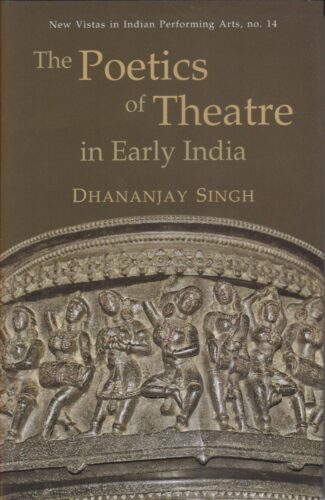Showing all 3 results
The fascinating world of multiple Bharatas that this book introduces its readers with is that of a perennial tale discovered and created afresh at each juncture of time; at each moment of self-doubt and self-exploration; at each rejoicing of self-discovery and self-recovery. If one does not come across a seamless continuity here, one does not encounter apparent ruptures either. The Bharatas, as narrated here, present us with amazing diversity with palpable consubstantiality expressed in myriad forms and multiple hues; tradition belonging as much to its contemporaneity as to its past; belonging as much to the spokes as to the axle; centrifugal and centripetal at once; a tradition old and new at the same moment of time.
The book is based on the proceedings of a seven-day international conference organized by the Indira Gandhi National Centre for the Arts (IGNCA) on the living traditions of the Mahabharata in the year 2011. The conference explored the multiple tellings and retellings of the Mahabharata story as sung, danced, and celebrated in festivals, inscribed on to geographic landscapes, committed to memory as sacred genealogy, embodied in rituals, and sculpted in shrines and temples. The presentations ranged from issues of poetics and ethics to translations, adaptations, and variations to folk and tribal traditions as sung, recited, and performed. Rather than exploring the Mahabharata as a book or a singular narrative, these papers focus on the multi-tradition of the Mahabharata in all its multidimensionality, multiplicity, and above all, in its fluidity. The book would certainly interest the scholars engaged in the study of the living heritage of Indian epics, folklorists, indologists, and anthropologists.
Natankusa of an unknown author is a unique work furnishing a first-hand account of Kerala theatre as practised in the medieval period. It also provides vivid account of Sanskrit plays like Ascaryacudamani of Saktibhadra as taken up in performance. In his attempt at critiquing the contemporary theatre, the author makes a threadbare analysis of the practices of cakyaras – the actors of Sanskrit theatre during his times. Kudiyattam, the Sanskrit theatre of Kerala has survived in actual theatre practice for about one millennium. It is recognized as a world heritage. Offering a brilliant critique of Kudiyattam, the author of Natankusa raises fundamental questions with regard to the relationship between the sastra and the loka – the theory and the practice. The present edition of Natankusa is based on fresh manuscript material will go a long way with the students and researchers of classical Indian theatre and will also serve as a manual for the practitioners of Indian theatre according to Bharata’s Naṭyasastra.

This book critiques the poetics of theatre in early India by interpreting a system of theatre and performance along several themes such as theatre’s place in the premodern interdisciplinary knowledge systems, theatre space and architecture, cognition and emotion, performance, experience and consciousness, human and social behaviour, and music.
Theatre discourses of early India present theatre (natya) as an integrated art form, and the poetics of theatre as an interdisciplinary system of thought and performance. Theatre functions as a composite art production comprising dance (nrtya), song (gana), instrumental music (Atodya) and enactment (abhinaya). The poetics of this theatre provides thoughts, techniques, and instrumental frameworks for performance, based on an interdisciplinary reflection upon space, body, mind, motion, sound, memory, consciousness and theatre in relation to the other disciplines of knowledge.
This book attempts to examine the poetics of theatre in early India by interpreting a system of theatre and performance along several themes such as theatre’s place in the premodern interdisciplinary knowledge systems, theatre space and architecture, cognition and emotion, performance, experience and consciousness, human and social behaviour, and music. While focusing mainly on the aphoristic statements on theatre by Bharata in his Natyasastra (third century bce), the book responds to the principles of theatre and literature discussed and debated in a tradition of texts such as Nandikesvara’s Abhinaya Darpana (fifth-fourth century bce), Rajasekhara’s Kavyamimasa (tenth century ce) and Abhinavagupta’s Abhinavabharata (tenth-eleventh century ce). The major concepts elaborated in the book consist of the types of theatre space (ranga), forms of mental/emotive states (bhavas), forms of consciousness (rasas), human and regional variations of performance (vrtti and pravrtti), forms of vocal and instrumental music (gana and atodya), and various others. Divided into eight chapters, each addressing an aspect of theatre, the book is premised upon the argument that theatre poetics of early India presents a coordinated world of inner experience rooted in the self (citta) formed by cognition, emotion and consciousness, but that which develops on stage into an artistic network created by the primitive human behaviour, body, senses, space, sound and the external world, including the varieties of the social world.
| There are no products |